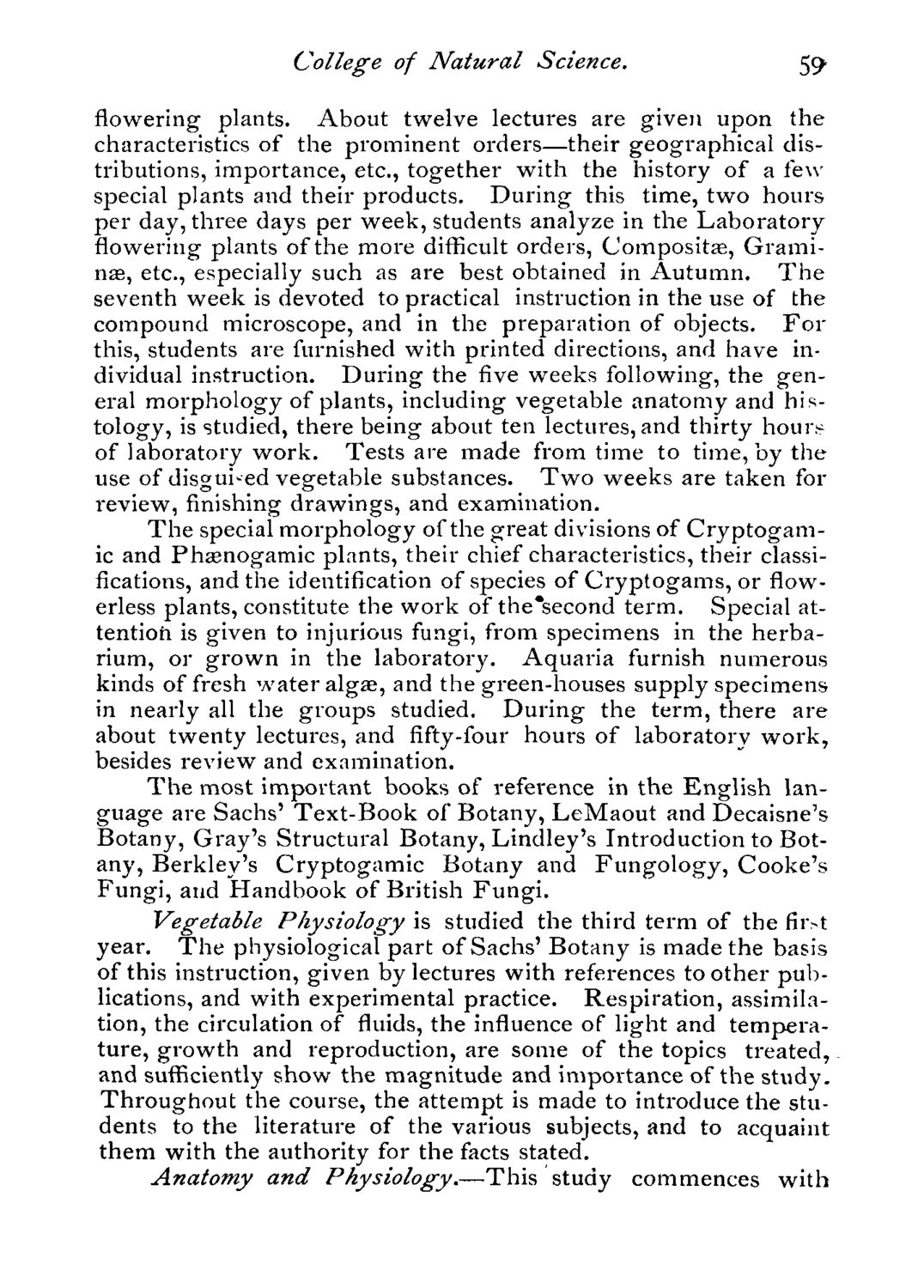| |
| |
Caption: Course Catalog - 1880-1881
This is a reduced-resolution page image for fast online browsing.

EXTRACTED TEXT FROM PAGE:
College of Natural Science. 59- flowering plants. About twelve lectures are given upon the characteristics of the prominent orders—their geographical distributions, importance, etc., together with the history of a few special plants and their products. During this time, two hours per day, three days per week, students analyze in the Laboratory flowering plants of the more difficult orders, Compositas, Graminee, etc., especially such as are best obtained in Autumn. The seventh week is devoted to practical instruction in the use of the compound microscope, and in the preparation of objects. For this, students are furnished with printed directions, and have individual instruction. During the five weeks following, the general morphology of plants, including vegetable anatomy and histology, is studied, there being about ten lectures, and thirty hours? of laboratory work. Tests are made from time to time, by the use of disgui-ed vegetable substances. Two weeks are taken for review, finishing drawings, and examination. The special morphology of the great divisions of Cryptogamic and Phasnogamic plants, their chief characteristics, their classifications, and the identification of species of Cryptogams, or flowerless plants, constitute the work of the'second term. Special attention is given to injurious fungi, from specimens in the herbarium, or grown in the laboratory. Aquaria furnish numerous kinds of fresh water algae, and the green-houses supply specimens in nearly all the groups studied. During the term, there are about twenty lectures, and fifty-four hours of laboratory work, besides review and examination. The most important books of reference in the English language are Sachs' Text-Book of Botany, LeMaout and Decaisne's Botany, Gray's Structural Botany, Lindley's Introduction to Botany, Berkley's Cryptogamic Botany and Fungology, Cooke's Fungi, and Handbook of British Fungi. Vegetable Physiology is studied the third term of the fir>t year. The physiological part of Sachs' Botany is made the basis of this instruction, given by lectures with references to other publications, and with experimental practice. Respiration, assimilation, the circulation of fluids, the influence of light and temperature, growth and reproduction, are some of the topics treated, and sufficiently show the magnitude and importance of the study. Throughout the course, the attempt is made to introduce the students to the literature of the various subjects, and to acquaint them with the authority for the facts stated. Anatomy and Physiology.—This study commences with
| |